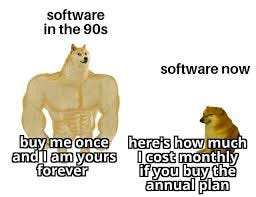10 pricing and packaging optimizations you should prioritize, like yesterday.
High-impact experiments you can (and should) be running.
In a recent newsletter, I introduced the Monetization Council™ - a cross-functional dream team in charge of the big, strategic “how do we make money” decisions.
But today we’re talking about everything outside that council. The scrappy, no-permission-needed, high-impact experiments you can (and should) be running right now.
The best part? You don’t need to mess with your pricing model to see big wins. Just sharp design, clever defaults, and a little creativity to make your conversion rates go.
This post is sponsored by Schematic: Schematic gives growth and product teams full control over pricing & packaging - without code changes. Configure usage-based plans, add-ons, paywalls, and enterprise exceptions in minutes, not months. Check them out →
Here are 10 monetization optimizations your Growth team should be running.
1. Default new users into a reverse trial
I'm very passionate about companies testing reverse trials - so much so that I wrote a whole article on the topic.
A couple of things you need for this to work:
Your product has a freemium
It is possible for a free customer to try *some* version of the paid plan without bankrupting your business
A standard freemium user journey typically looks like: users sign up for a freemium account, maybe hits feature walls, and get prompted to start a trial or purchase the paid plan.
The reverse trial flips the flow: users sign up and immediately get access to all paid features for a limited time - "Congratulations! We've unlocked all premium features for the next 7 days. No credit card required.” The user is able to experience the full value of the product upfront, while activating, and when it’s taken away, they feel the pain, driving an upgrade.
In other words, reverse trials play the psychological game of “take it away” - you get the premium experience first, then lose it unless you upgrade. Traditional trials and upgrade paths? They’re all about “pay to play” - you only get the good stuff after you commit.
Reverse trials usually result in ~20% lift in conversion - assuming high utilization of paid functionality within the reverse trial window (which is a very critical point!!!).
2. Restart trials over time
Many companies treat trials as one-and-done.
After the trial ends, users are forever stuck in freemium, or they have to wait for a long period (often a year) until they become eligible for a free trial again.
Don’t do this!
Users need paid functionality at different times, depending on what they're trying to accomplish and the complexity of their use case. On average, it takes 2-3 trials to upgrade a free customer to paid. So make sure you’re giving them the opportunity to experience those trials. Channel your inner Oprah here:
Here are a few ways you can achieve this:
Set a timeline: Every six months or so, reverse trial your entire user base. Tesla did this with the autopilot feature, enabling it for all cars without notice. The result? You guessed it: a ton of upgrades.
Coincide with product launches: Usually, product teams do big releases once or twice a year. These are great moments to offer a free trial to your user base. The message you’re sending is: "We've launched amazing new features, and you get access to them for the next 30 days, on us". It’s highly effective to drive engagement in the new functionality, and it might even resurrect some existing customers.
Trigger by user action: When a user hits a feature wall, offer a trial that includes all the paid features, not just the one that triggered it.
The first two approaches have an added benefit: they create urgency. Instead of communicating that a trial is available whenever users want it, you're saying "the clock has started, and you only have 30 days to experience this.”
This strategy works best for products with a large freemium user base or a big pool of churned users just waiting to be resurrected with the right nudge.
3. Experiment with monthly vs. annual default
In subscription businesses, how you frame pricing - monthly or annual pricing default - has a big impact.






